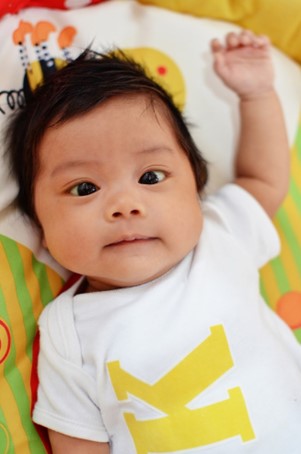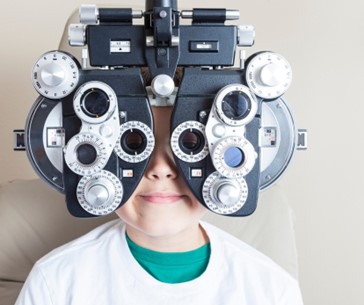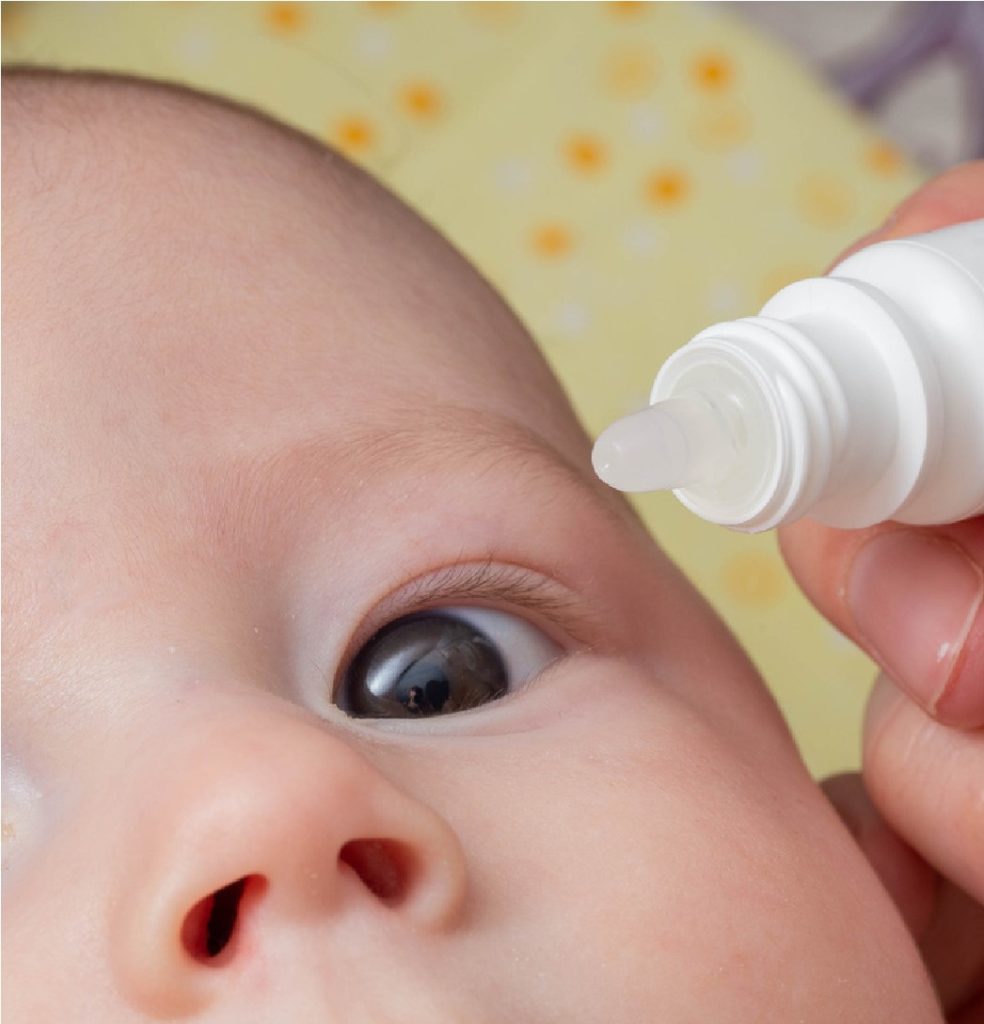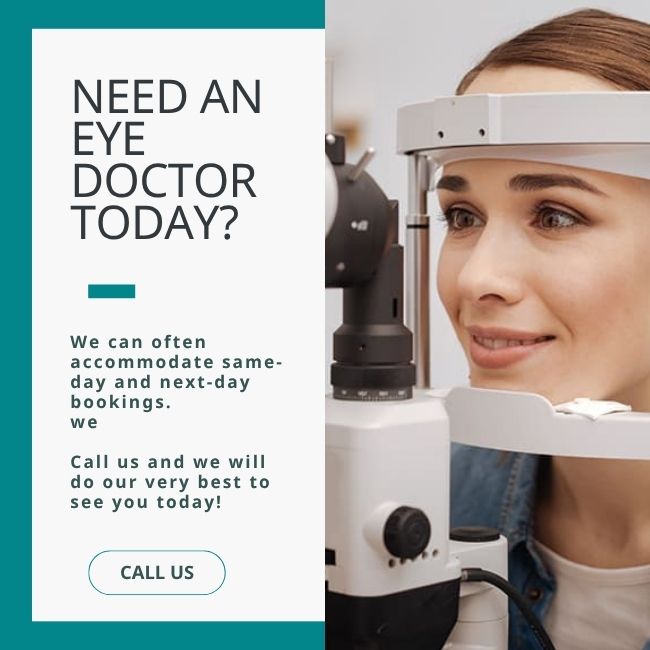What is the recommended age for a child’s first eye exam?
According to the Alberta Association of Optometrists, a child’s first eye exam should be between 6-9 months old. The second eye exam should be between the ages of 2-5 years old and every year after that. Children can have annual eye exams from 6 months to age 19 with some coverage through Alberta Healthcare. They can also be seen younger than 6 months for any concerns such as eye infections and blocked tear ducts.
Children’s Eye Exams | Calgary | Trinity Hills Eyecare

What are you checking for in a baby’s eye exam?
We check 3 main areas:
- Refraction– involves measuring the eyes for any near- or far-sightedness, astigmatism, or any significant difference between the eyes. Most infants are far-sighted with some degree of astigmatism. This refraction decreases as they get older. A cycloplegic exam (drops used) is performed for a more accurate measurement, especially if glasses are needed. This exam involves instilling drops to relax the focus and dilates the pupils. We use a retinoscope and lenses to shine a light in the eyes and measure the power of the eye based on the light reflection.
- Binocular vision-is all about the eye muscles how the eyes work together. The main things we look for are strabismus (eye turn) or a lazy eye (one eye not seeing as well as the other). We see how the eyes can follow objects, whether one eye dislikes being covered more than the other and if the eyes appear straight.
- Eye Health– We check the inside and outside of an infant’s eyes using lights and magnifiers. We check for congenital (from birth) issues like cataracts or improper optic nerve development and for a rare eye cancer called retinoblastoma. For retinoblastoma, we look for a red-light reflex coming from the back of the eye- a white reflex would be a concern. If this white reflection is noticed in flash photos of the baby, they should be seen promptly!

How does the eye exam change for a toddler/preschooler?
Until a child can speak or follow directions to point at pictures, the exam is about the same as for an infant. For older children who do not meet these milestones, we are still able to use objective measurements to determine eye health, binocularity, and refraction. Pictures to determine acuity and depth perception are added as soon as children can point at or say picture names. Refraction can be done with a phoropter and using videos to keep the child’s attention. We can also use a microscope to visualize the eyes better. By 3-5yrs old the eye exam is like an adult examination, but more fun! We can even incorporate technology such as retinal imaging and auto-refraction measurements as kids get older. With infant and toddler exams, we need to work fast and keep the child’s attention with toys and props! Children do best if they are well rested and well fed before an eye exam!

Reasons to bring your infant or toddler in for an eye exam outside of routine examinations:
- Eye turn
- White reflex in the pupil- especially seen with flash photography- the reflex is normally red
- Child not meeting milestones
- Excessive tearing
- Red eye/crusty lids
- Extreme light sensitivity
Book an eye exam today! Visit Type (opto.com)




